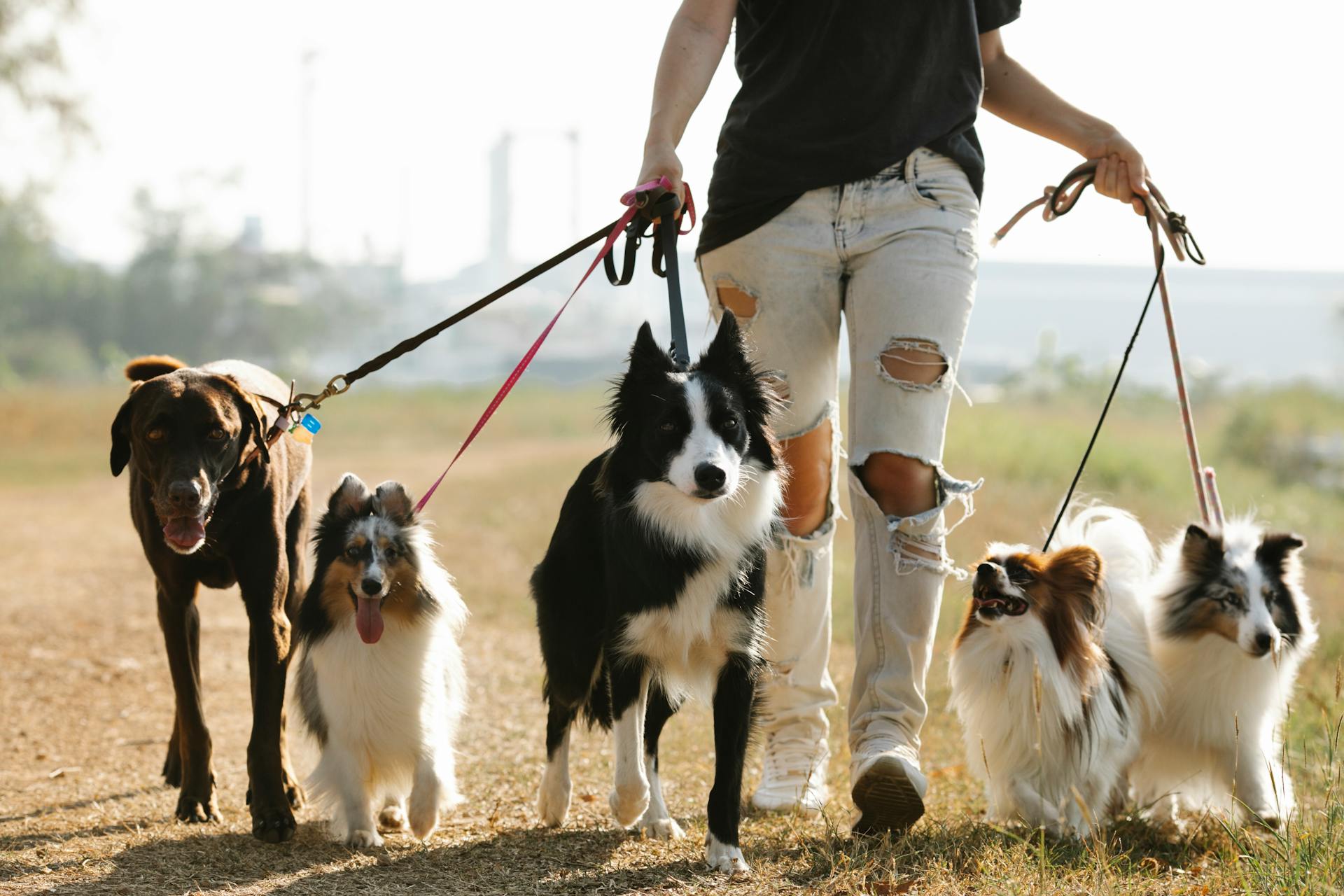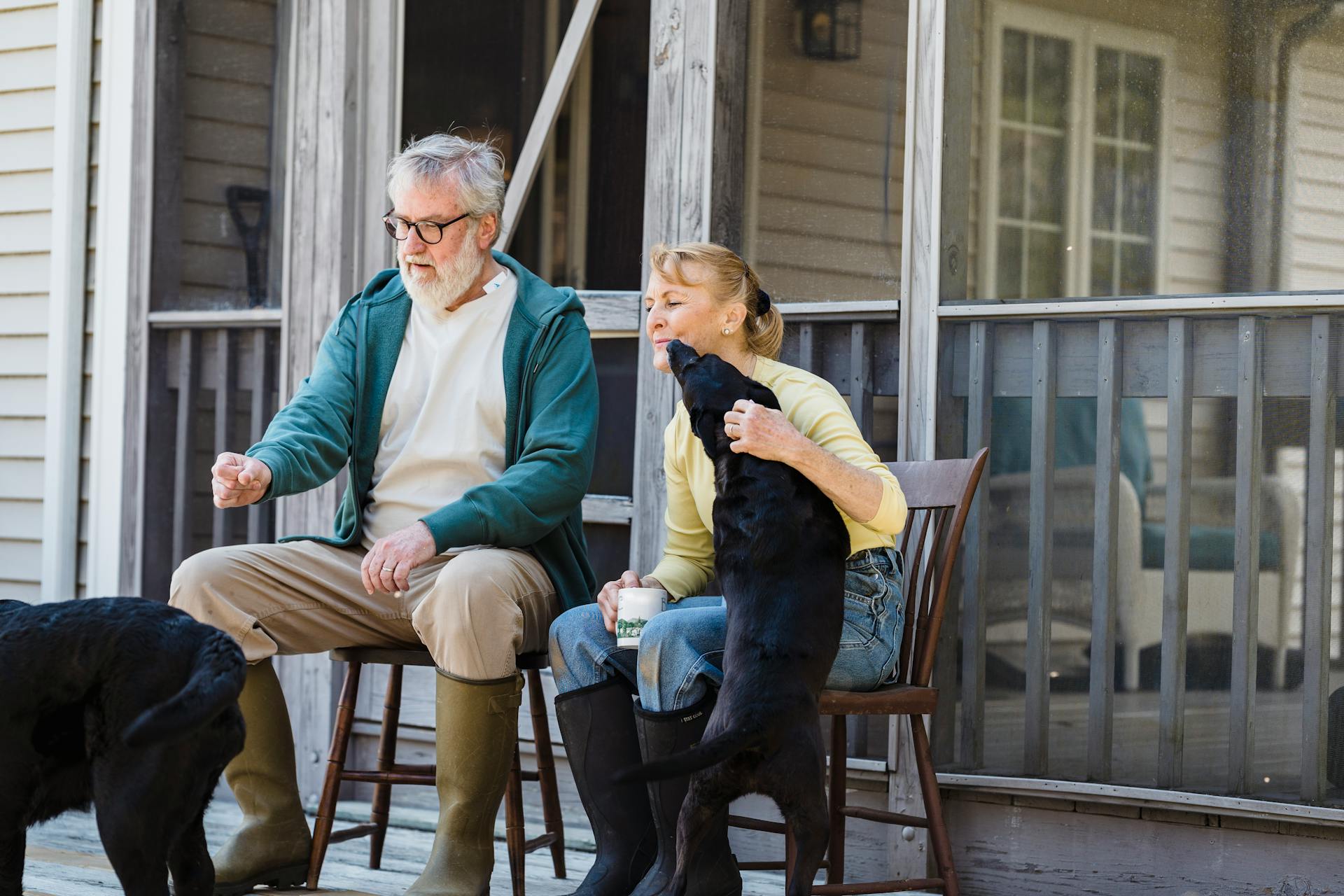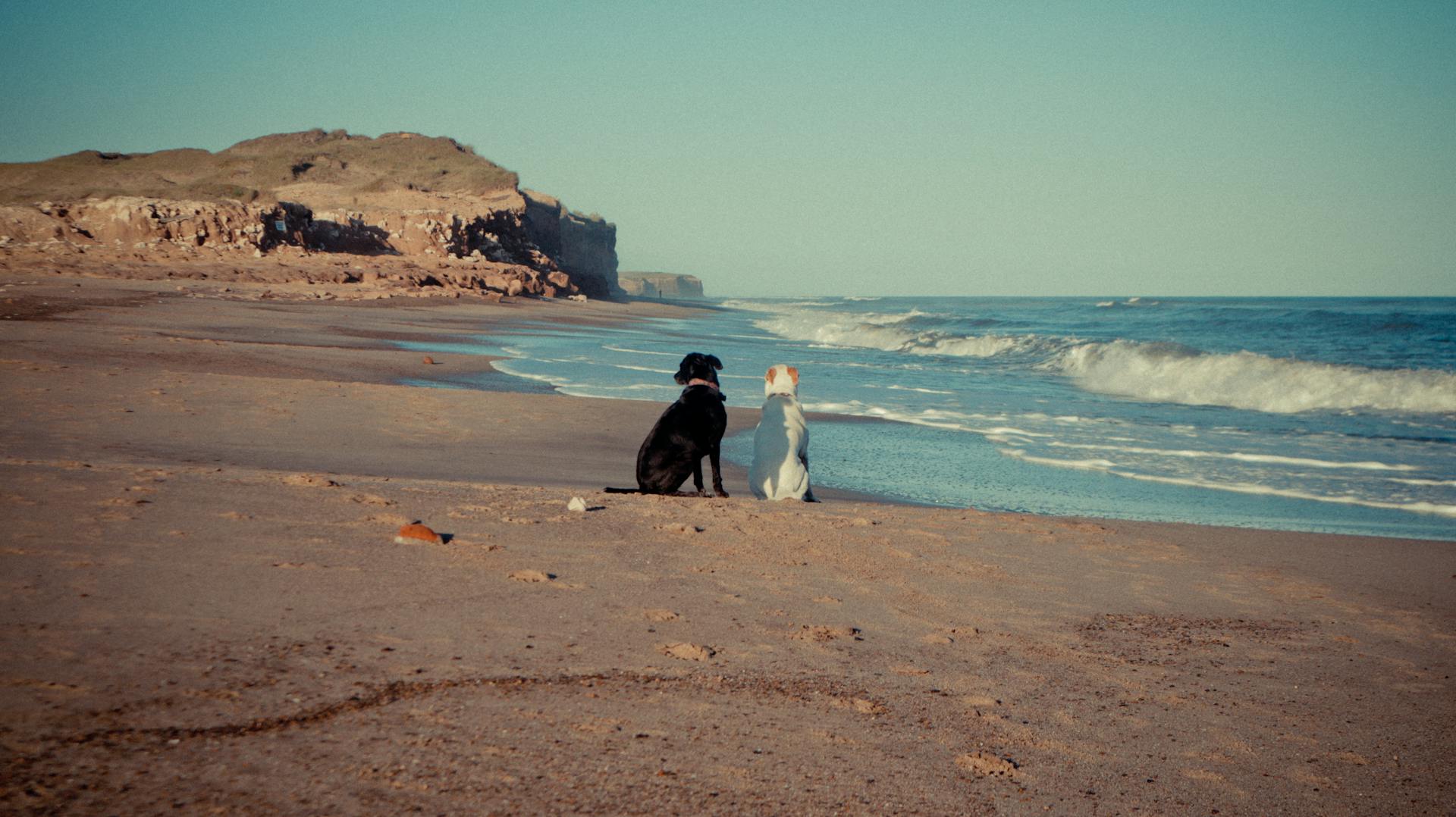
Dogs have a unique way of showing affection for their favorite toys, often displaying a strong attachment to a particular item.
A study found that 70% of dogs have a favorite toy, and it's not uncommon for them to become obsessed with it.
Some dogs are naturally more playful, and their favorite toys often reflect this trait.
For example, a dog that loves to chew may have a favorite toy that's made of durable rubber or nylon.
Do Dogs Have Favorites?
Many dogs have a favorite toy, and it's not just a coincidence.
While this isn’t true for every dog, many pups absolutely have a toy they favor more than the others in their toy box.
There are several reasons why your dog may prefer one toy over others, and it's often due to the toy's texture, smell, or sound.
Some dogs are drawn to toys with a particular texture, such as a squeaky toy or a plush toy with a soft fur.
Your dog may also have a favorite toy due to its smell, such as a toy that smells like a familiar scent or a favorite treat.
Dogs are also known to be attracted to toys that make a specific sound, like a squeaker or a bell.
Why Dogs Love Their Favorites
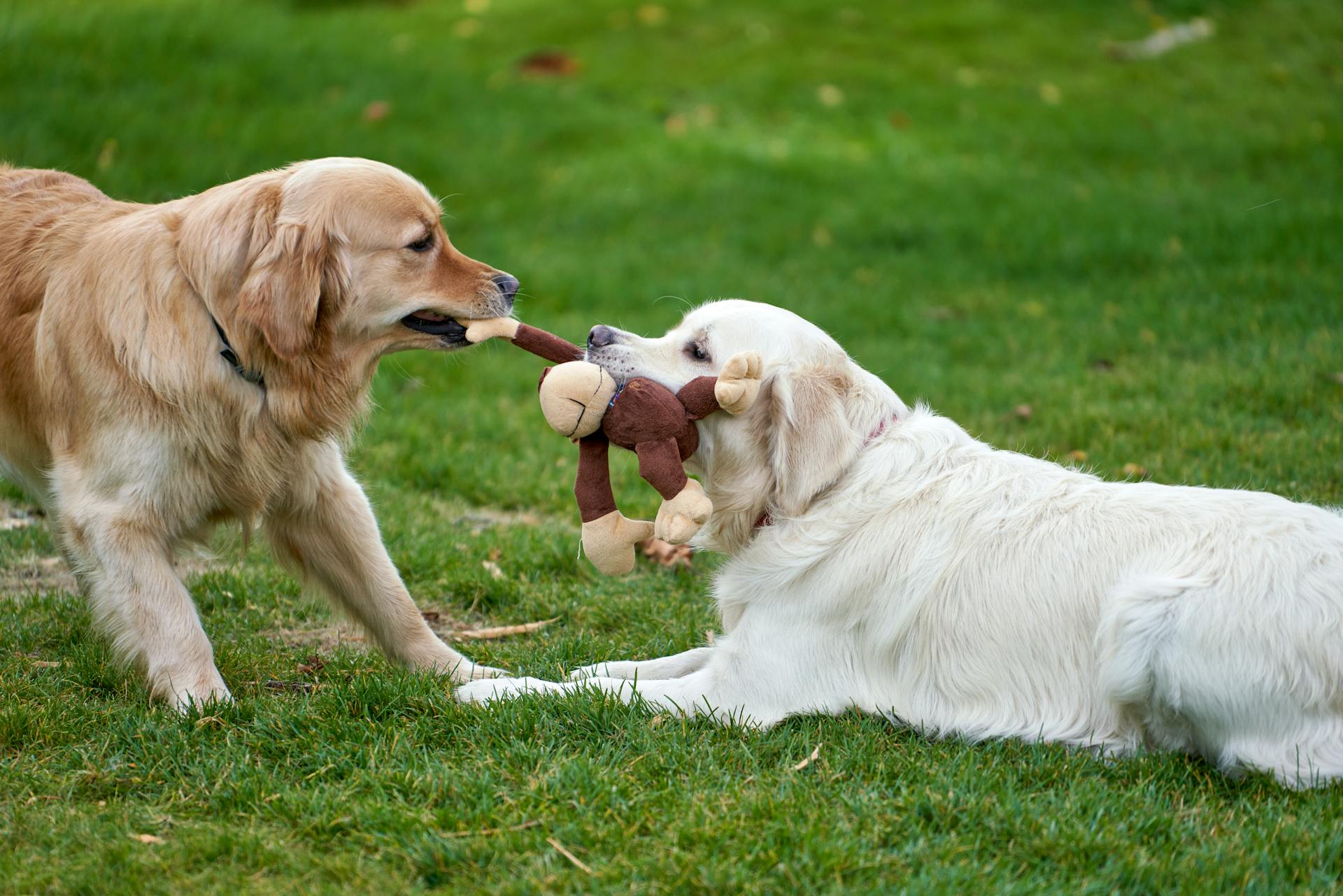
Dogs have a way of forming attachments to certain objects, just like people do. Their personalities are unique and varied, including their preference for some types of toys.
Having a favorite toy can bring dogs happiness and satisfaction, relieving boredom and providing stimulation for their mind and body. It's not uncommon for dogs to have a go-to toy that they turn to when they're feeling down or anxious.
A favorite toy can also give dogs a sense of security, much like a security blanket does for humans. It may be a squeaky toy, a stuffed animal, or even a simple old sock – whatever it is, it's special to them.
What to Do If Your Dog Is Obsessed
If your dog is obsessed with their favorite toy, it's essential to address the behavior to prevent anxiety and distress. Safety first, so never try to force them to give up their toy, and don't enter their personal space to obtain it.

Offering rewards is a great way to convince your dog to let go of their toy. Try showing them an enticing reward, and once they willingly give up their toy, return it to them to show they can trust you with their beloved belonging. This helps them understand that you're not a threat.
Giving them an alternative toy to occupy their attention is another technique worth trying. Training your dog to know phrases like "leave it" and "drop it" can also help break possessive behaviors. This is a skill that takes time and patience, but it's worth it in the long run.
If your dog is holding onto their toy out of fear of losing it, you can try desensitizing and counter-conditioning. This involves associating letting go of their toy with something positive, like food. Throw pieces of their favorite food toward them, and when they drop their toy and show interest in the food, throw more pieces further away. This helps change their emotional response to letting go of their toy.
Here are some steps to follow when addressing your dog's possessive behavior:
- Prevent injury by not entering their personal space or forcing them to give up their toy.
- Offer rewards to convince them to let go of their toy.
- Give them an alternative toy to occupy their attention.
- Desensitize and counter-condition by associating letting go of their toy with something positive, like food.
Puzzle

Dogs who enjoy puzzle toys are likely to be intelligent and skilled problem solvers. They're also likely to be confident, independent, curious and persistent.
Dogs who like puzzle toys are often described as "smarty-pants" because they enjoy having a job to do.
Understanding Dog Preferences
Dogs have unique personalities and preferences, just like humans, and their favorite toys are no exception.
Many dogs form attachments to certain objects, and their favorite toy may provide comfort and satisfaction, relieving boredom and providing stimulation to both mind and body.
Your dog's favorite squeaky toy may give them a sense of security, just like a security blanket does for some humans.
Dogs can have a favorite toy for the same reason children get attached to stuffed animals: it provides comfort and a sense of security.
For some dogs, holding something in their mouth is comforting, and they'll seek out their favorite toy to carry around, whether they're nervous or excited.

Some breeds, like Retrievers, have a deep-seated desire to retrieve, so they may become attached to toys that allow them to fulfill that instinct.
Hunting dogs often enjoy squeaky toys because the noises they make sound like prey when they're chewing on them.
Female dogs sometimes maintain maternal instincts and become attached to plush toys that remind them of their puppies.
Unspayed female dogs can have a false pregnancy, which causes them to feel and act pregnant when they aren't, leading them to baby their toys and try to nest.
On a similar theme: Why Is My Female Dog Whining and Carrying a Toy
Types of Favorite Toys
Dogs love plush toys, and a simple squeaker can be a game-changer.
The Multipet Lamb Chop Squeaky Plush Dog Toy is a great example of a favorite toy that's both affordable and long-lasting. Starting at just $3, it's a household staple for many dogs.
Plush toys like the Multipet Lamb Chop are often a dog's first love, and they can withstand countless play sessions and washing machine cycles.
Broaden your view: Why Do Dogs Love Lamb Chop Toy
Squeaky
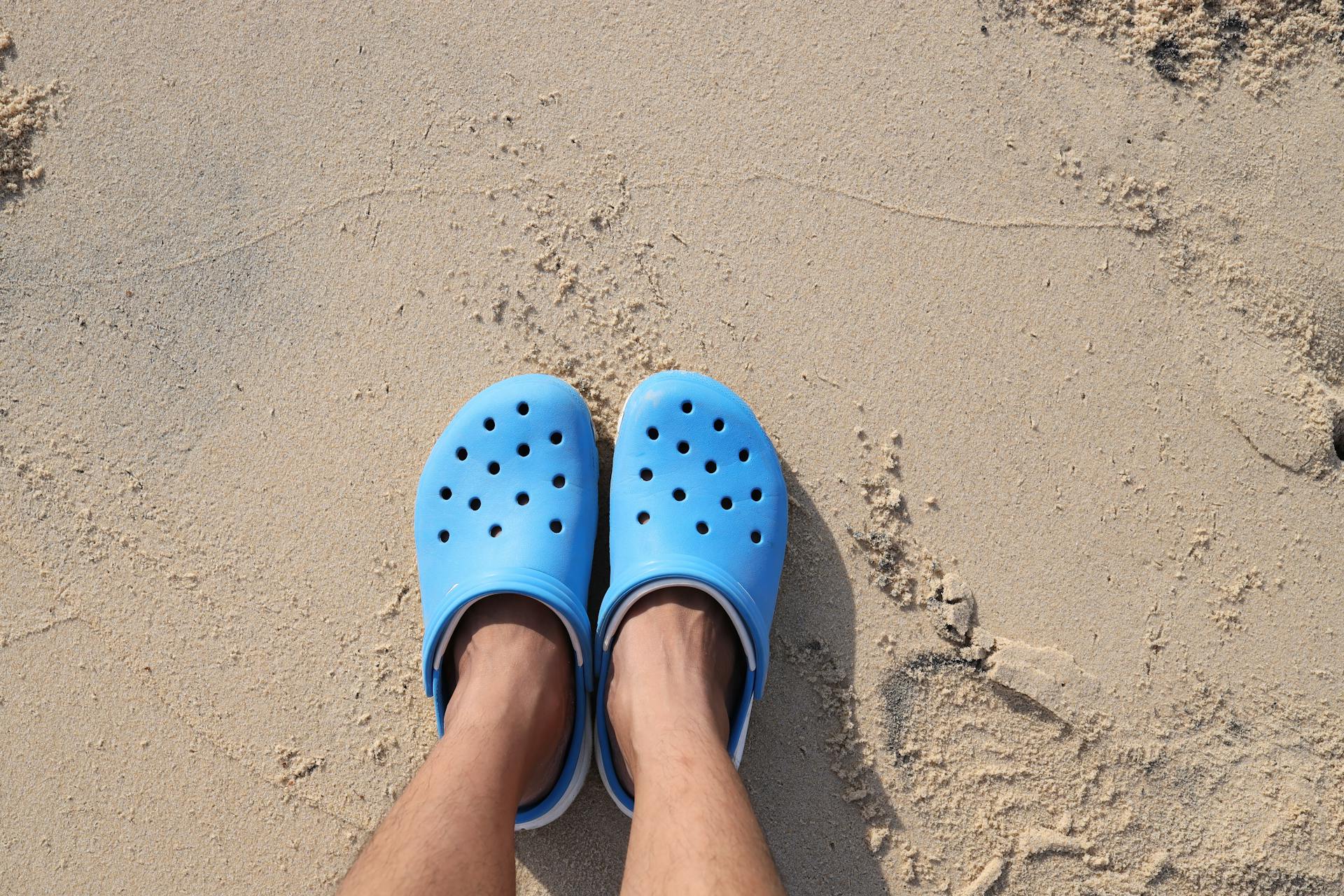
Squeaky toys are a favorite among dogs with strong prey drives, who instinctively love to hunt and chase small prey animals. These toys mimic the sounds that potential prey would make if frightened or injured.
Dogs with high prey drives are naturally drawn to squeaky toys because they trigger an instinctual urge to hunt. Squeaky toys provide immediate gratification, giving dogs a reaction every time they chew on them.
Some dogs adore squeaky toys so much that they become their go-to companions. For example, a French bulldog named Parmesan loved her Multipet Lamb Chop Squeaky Plush Dog Toy so much that she claimed it as her own and even mourned when it finally wore out.
Dogs who enjoy squeaky toys are likely to have certain personality traits, such as playfulness, curiosity, and persistence. These traits make them enjoy activities like playing with squeaky toys and other interactive toys.
See what others are reading: Squeaky Toy Noises for Dogs
Durable Frisbee
The Chuckit Ultra Ball is a great example of a durable Frisbee that can withstand rough play. Made entirely of rubber, it's much more difficult to chew through than a standard tennis ball.

Bone, a 40-pound pit bull, loves to retrieve and chew tennis balls, but tears into them within minutes. The Ultra Ball has lasted for up to a year with her supervision.
The Ultra Ball is bouncier on turf than most tennis balls, making for more stimulating games of fetch. It's also bright orange, making it easy to spot, even in tall grass.
This Frisbee-like ring is tough enough for powerful chewing and has avoided the violent fate of other plush toys after several months. It's also soft enough for some light fetch inside a small apartment without breaking anything.
Pull
Pull toys are a great way to channel your dog's energy and predatory instincts.
Dogs that prefer tug-of-war games with their owners are natural competitors, and they love showing off their strength.
Tug-of-war is a collaborative game that allows your dog to get out a lot of energy in a way that's fun for both of you.
Pull toys can be a good sign that your dog likes to get back to her roots and exercise her hunting instincts.
For another approach, see: Tug of War Toy for Dogs
The Classic Stick
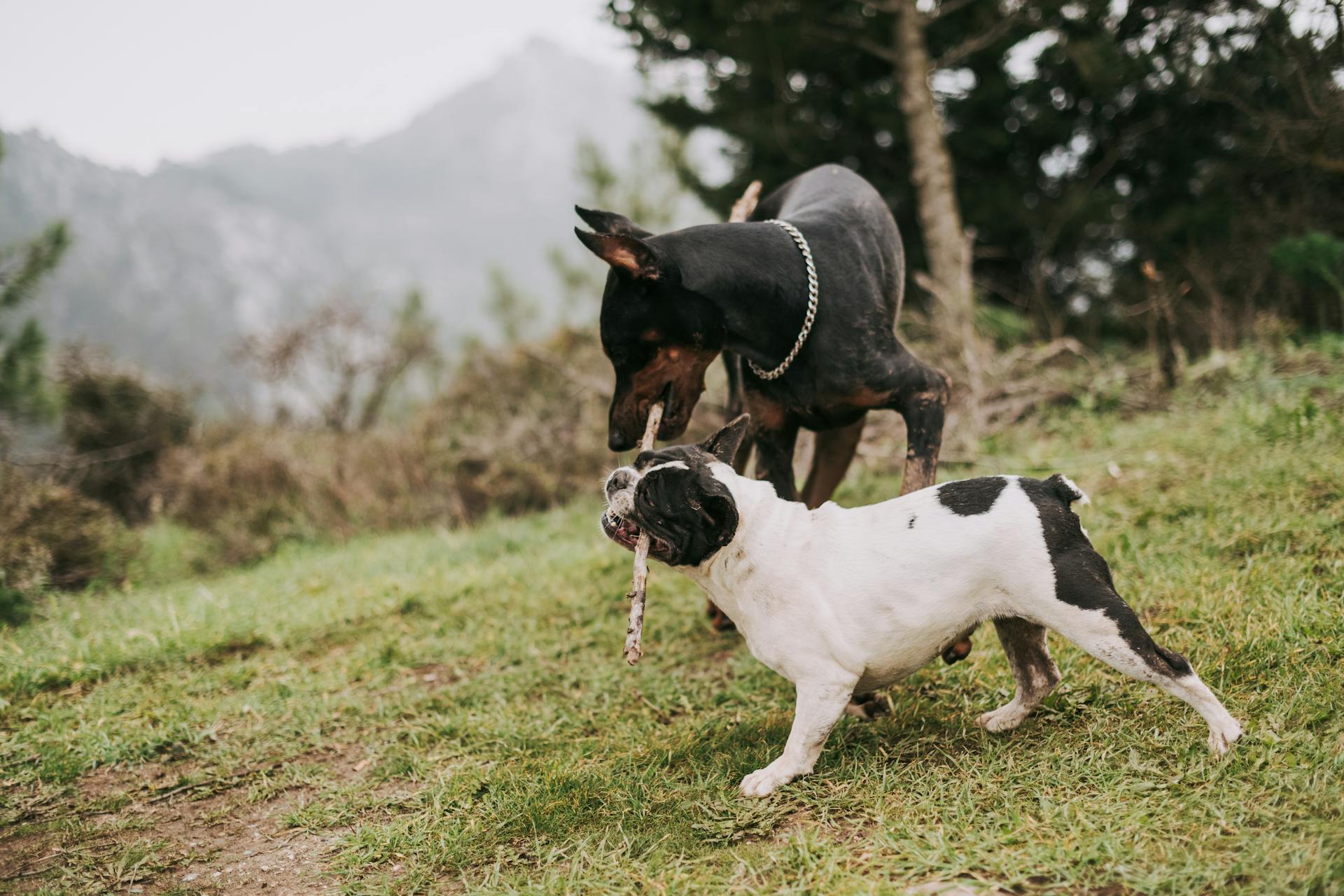
The Classic Stick is a timeless favorite among dogs. It's a simple, yet effective toy that can provide hours of entertainment.
Dogs love sticks because they are similar in shape to bones, which is a natural instinct for them. According to psychologists, this drive to chew up bones stems from past dogs trying to feast on fatty bone marrow during trying times.
The Classic Stick also allows dogs to explore their surroundings and engage in natural behaviors like seeking out treasures and showing them off to their owners. If your dog loves sticks, she's probably a curious treasure hunter who likes to explore the fascinating sights and smells of the outside world.
In fact, many dogs will go to great lengths to retrieve a stick, and it's not uncommon to see them proudly carrying their prize back to their owners. This behavior is a testament to the stick's enduring appeal as a favorite toy.
A Long-Lasting Distraction
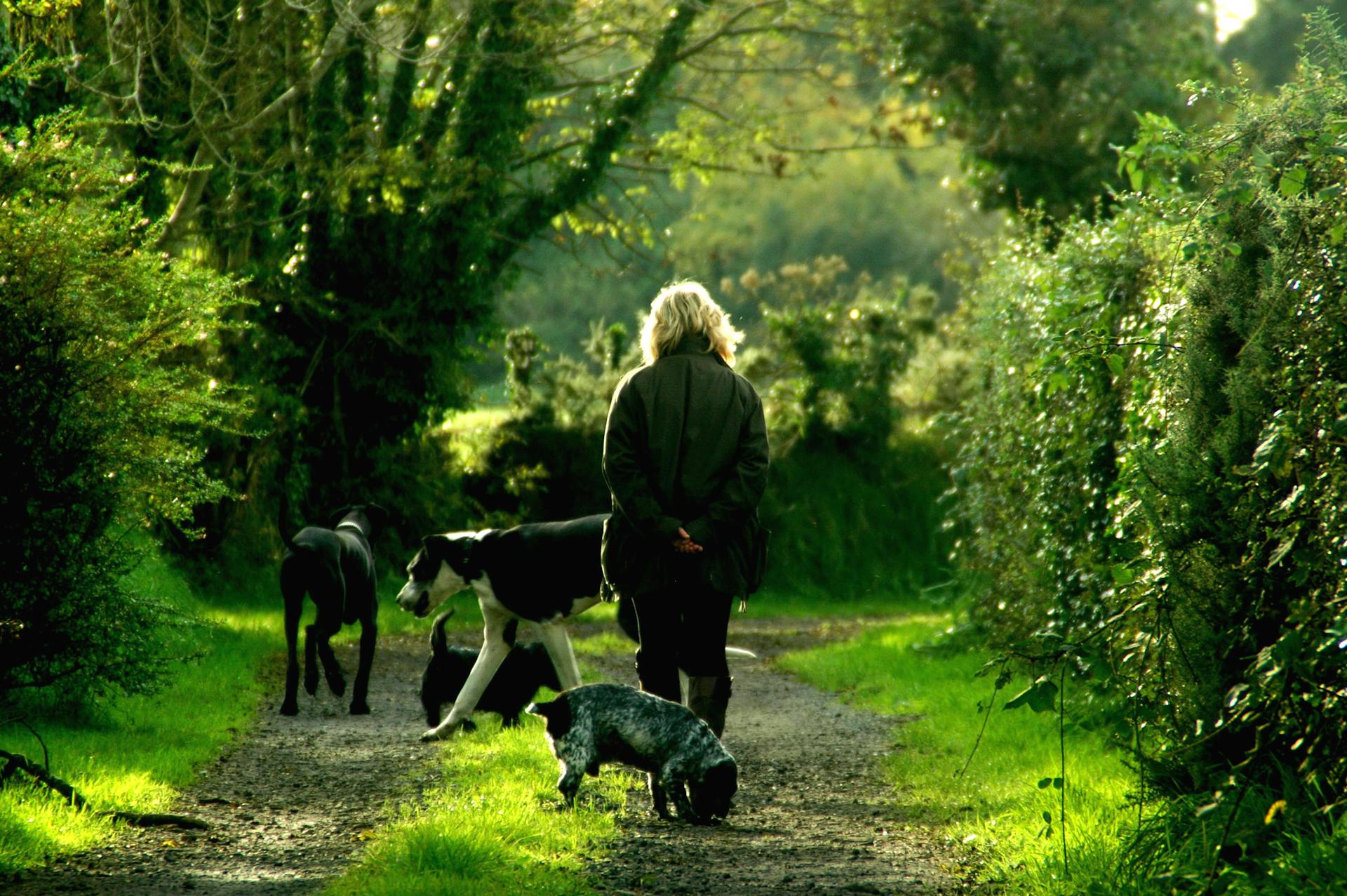
Dogs can get bored quickly, but a good distraction toy can keep them engaged for a while. The Woof Pupsicle is a great example of a long-lasting distraction toy that has become a favorite for many dogs.
This toy is made of natural rubber and can be filled with treats or a tasty concoction, keeping your dog busy for up to a half an hour. It's also easy to clean, as it can be unscrewed and thrown in the dishwasher.
Some dogs, like Dave, a 65-pound mutt, are particularly fond of the Woof Pupsicle. It's been a game-changer for his owners, who appreciate the ease of cleanup and the fact that it's durable enough to withstand his powerful jaws.
Here are some key features of the Woof Pupsicle:
By providing a long-lasting distraction, the Woof Pupsicle can help reduce boredom and destructive behavior in dogs. It's a great addition to any dog's toy collection.
Frequently Asked Questions
What are dogs most favorite toy?
Dogs often enjoy chasing balls, rubber toys, and flying disks, which come in various shapes and sizes to keep them engaged
Is it OK my dog is obsessed with a toy?
Dogs often become obsessed with toys due to the positive associations they've formed during playtime. If your dog is excessively attached to a toy, it's worth consulting a veterinarian to rule out any underlying issues
Sources
- https://www.dogster.com/lifestyle/why-does-my-dog-have-a-favorite-toy
- https://au.lifestyle.yahoo.com/dogs-favorite-toy-reveals-personality-101000133.html
- https://www.westparkanimalhospital.com/blog/dog-toys/
- https://www.bil-jac.com/the-dog-blog/posts/what-your-dog-s-favorite-toy-says-about-her-personality/
- https://www.nytimes.com/wirecutter/reviews/best-dog-toys/
Featured Images: pexels.com
